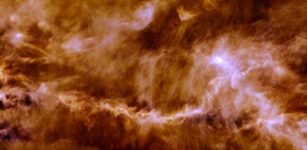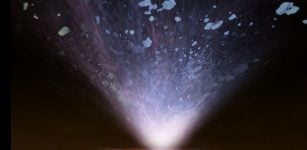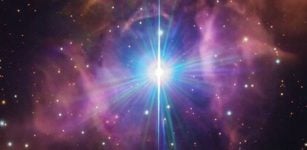Giant Star That Failed To Explode In Supernova And Became A Black Hole
MessageToEagle.com – A dying star – 25 times as massive as our sun – should have exploded in a very bright supernova but instead it was reborn as a black hole.
This kind of event was made for the first time by astronomers, who were looking for failed supernovae in other galaxies, using the Large Binocular Telescope (LBT).
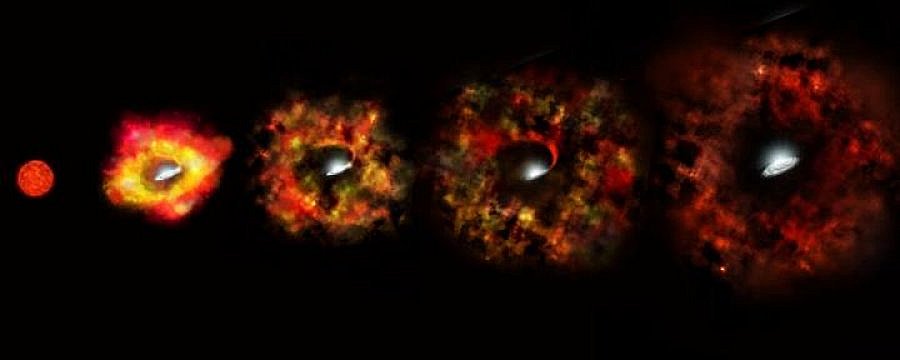
Credit: NASA, ESA, P. Jeffries (STScI)
“Massive fails” like this one in a nearby galaxy could explain why astronomers rarely see supernovae from the most massive stars, said Christopher Kochanek, professor of astronomy at The Ohio State University and the Ohio Eminent Scholar in Observational Cosmology.
“The typical view is that a star can form a black hole only after it goes supernova,” Kochanek explained.
“If a star can fall short of a supernova and still make a black hole, that would help to explain why we don’t see supernovae from the most massive stars.”
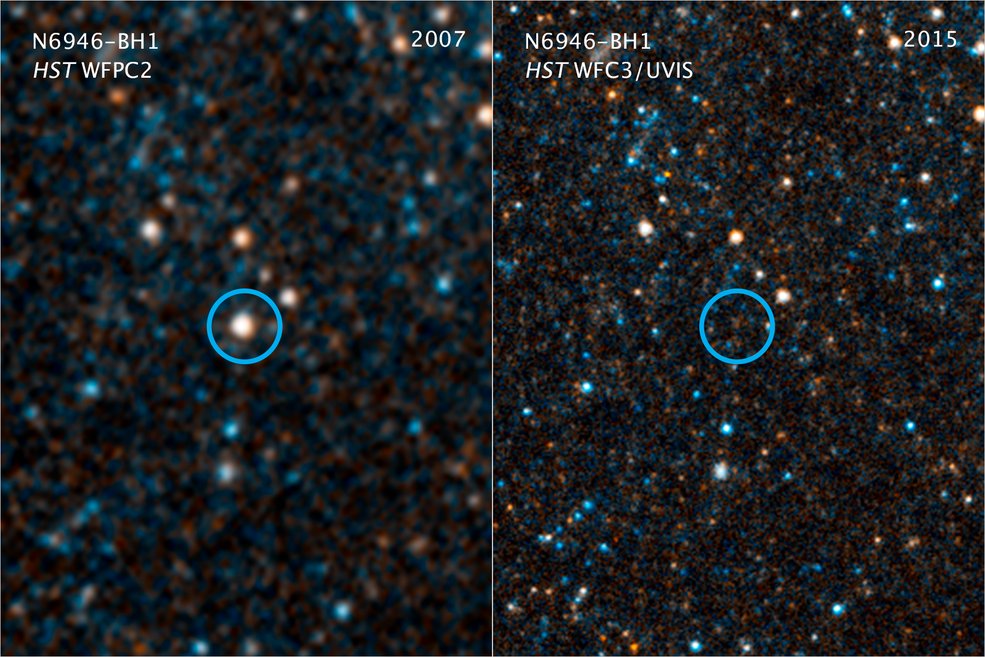
Credits: NASA, ESA, and C. Kochanek (OSU)
Among the galaxies they’ve been watching is NGC 6946, a galaxy 22 million light-years away that is nicknamed the “Fireworks Galaxy” because supernovae frequently takes place in this region.
Particularly one star named N6946-BH1 and located in the “Fireworks Galaxy” began to brighten weakly in 2009 and it finally vanished by 2015.
Using process of elimination, the researchers eventually concluded that the star must have become a black hole.
An interesting question is: how often stars experience massive fails?
N6946-BH1 is the only likely failed supernova that we found in the first seven years of our survey,” said Scott Adams, a former Ohio State student who recently earned his Ph.D. doing this work. Adams was able to make a preliminary estimate.
“During this period, six normal supernovae have occurred within the galaxies we’ve been monitoring, suggesting that 10 to 30 percent of massive stars die as failed supernovae,” he said.
Co-author, professor of astronomy at Ohio State, Krzystof Stanek, pointed out that the really interesting part of the discovery is the implications it holds for the origins of very massive black holes.
It doesn’t necessarily make sense, said Stanek, professor of astronomy at Ohio State, that a massive star could undergo a supernova — a process which entails blowing off much of its outer layers — and still have enough mass left over to form a massive black hole on the scale of those that LIGO detected.
“I suspect it’s much easier to make a very massive black hole if there is no supernova,” he concluded.
They published their latest results in the Monthly Notices of the Royal Astronomical Society.
MessageToEagle.com
Expand for references
